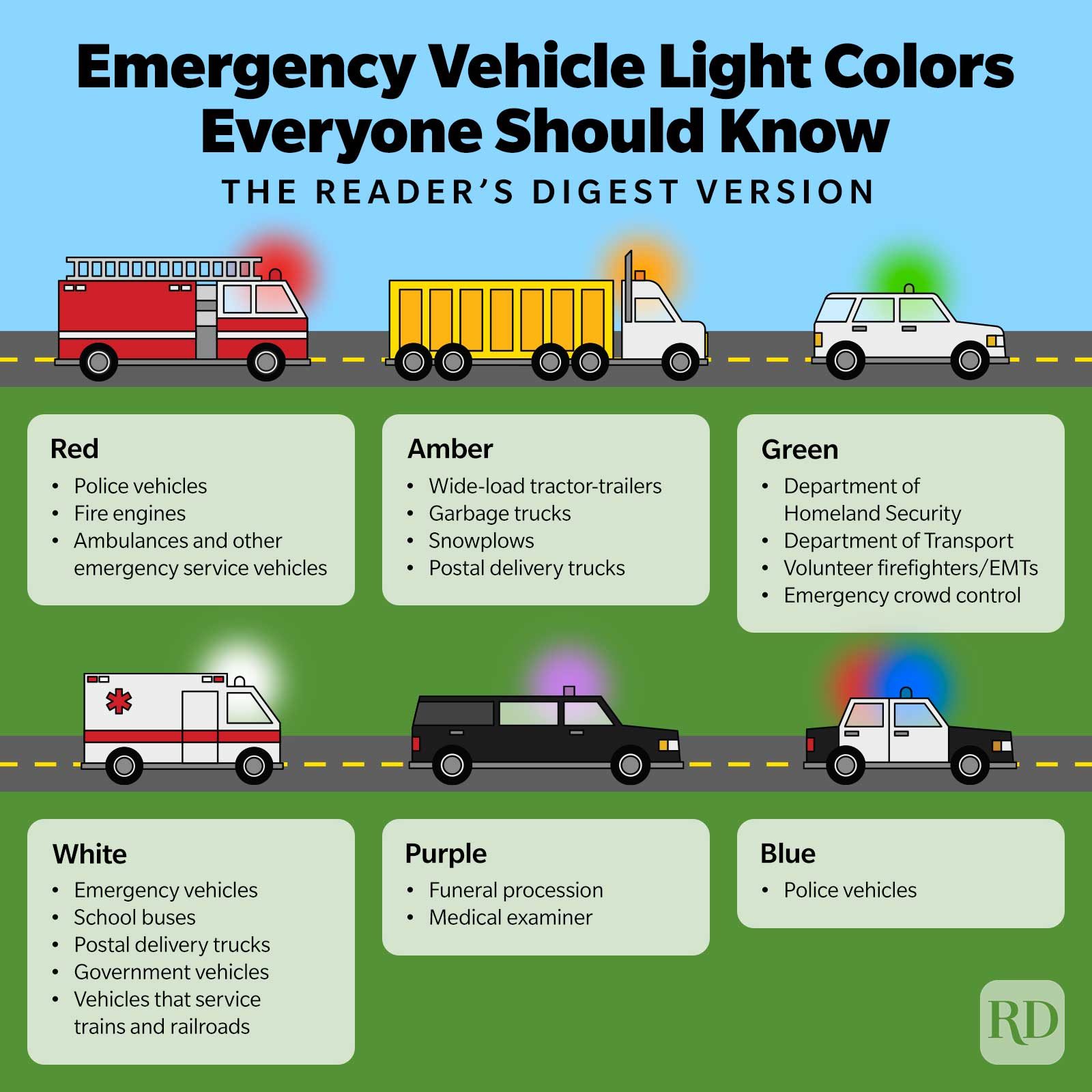If You See Green Lights on a Car, This Is What It Means

We know red lights are for fire trucks and blue are for law enforcement, but what on earth does it mean if you see green lights on cars? We're here to help you see the light.
Being a safe driver often involves picking up on the signals from your environment. From yellow yield signs to flashing red lights at railroad crossings to your dashboard lights, knowing and understanding what the different colors and lights mean helps you make the best decisions as you’re driving.
Even if you think you know all the interesting facts about your automobile, there are always more mysteries to unravel. In certain circumstances, you might see green lights on cars and wonder what they mean. Could they be for special vehicles, and should you slow down to let them pass?
We investigated the issue of green lights on cars and unearthed the answer. Set your mind at ease so you can cruise control safely home.
On This Page
What Do Green Lights Mean on a Car?
The Department of Homeland Security, the Department of Transportation, the fire service (often volunteer firefighters or first responders) and command post vehicles all use green lighting. That’s why you’re most likely to see green lights on a car patrolling a government facility or in a town with volunteer firefighting services.
But while red-and-blue lights indicate police no matter where in America you live, the use of green lights on cars differs by state. In some states, green lights — particularly those flashing — indicate an emergency vehicle.
Depending on where you’re driving, green lights on cars could indicate:
- Department of Homeland Security vehicles;
- Department of Transportation vehicles (like road maintenance vehicles in Michigan);
- Volunteer firefighters or EMTs in Canada, Indiana and Washington state;
- Emergency crowd control in Montana, the only time you could see green lights on a police car.
Can You Put Green Lights on Your Car?
The laws about who can put green lights on a vehicle vary from state to state. In many states, adding green lights to your car isn’t just bad driving etiquette — it’s illegal.
In most cases, the law exists to prevent other drivers from confusing your car for an emergency vehicle. There’s also a chance that green lights on cars could be mistaken for traffic lights.
In some states, like North Dakota, you can add green lights to your car as long as they’re not flashing and aren’t visible from the front of your car. As always, when modifying your car in any way, look up your state’s laws first. Otherwise, the next lights you see might be red and blue!
What Other Emergency Lights Might You See on Cars?
Just like colored circles on food packages, emergency vehicle lights make good use of the color spectrum. And that helps civilian drivers stay alert to possible emergencies. Besides green lights on cars, you’re likely to come across the colors below.
Red lights
In almost every situation, forward-facing red lights indicate an emergency vehicle: police, fire or emergency medical services like ambulances. Red usually means stop — think of stop signs and, of course, taillights. But when the front lights are red, it’s a cue for you to pay attention and potentially take action.
In some states, red lights can also indicate a city, county or state police car. Some states use a solid red light and a flashing blue one (California) or vice versa (Nevada) to delineate between police and fire vehicles. Other states add a white light for firefighters (Nebraska) or police (New York and North Dakota).
You may also see red lights on funeral hearses in Iowa, tow trucks in Texas and Michigan, and on the front and back of school buses everywhere.
It can be confusing, but there’s a good reason for the mix of lights. People with color blindness are often able to see either red or blue. Including both on emergency vehicles makes it more likely everyone will see an emergency vehicle and react appropriately.
Blue lights
Some countries have blue traffic lights. But in the United States, blue is most commonly associated with law enforcement, and we’re not just talking about their uniforms. That extends to vehicles as well.
Blue on a patrol car almost always indicates police, even if there are also white or red lights. In a few states, like Arkansas, law enforcement vehicles use blue lights only. But blue often appears alongside other colors.
White lights
Headlights are the most common white lights you’ll see on the road, but you might also catch them flashing on the roof or as part of a light bar on a vehicle. In those cases, the white lights provide contrast with other colored lights.
While red lights are the most common emergency light color, they can sometimes get lost in a sea of red taillights, especially in traffic. Using white lights next to red make it easier for drivers to pick out an emergency vehicle. If only it was as easy to pick out a red light camera!
You might see flashing white lights on school buses, postal delivery trucks and other government vehicles, as well as on vehicles that service trains and railroads.
Amber lights
Like the yellow of a traffic light, amber (a warm, orange-tinged yellow) means “slow down” or “prepare to stop” when you see it on a vehicle. Amber is considered a warning light, so you’re not required by law to yield or stop for a vehicle with amber lights on it.
Because amber lights often appear on slow-moving vehicles, like wide-load tractor-trailers, garbage trucks, snowplows and postal vehicles, it’s polite — and definitely safer — to slow down and give the vehicle room when you can.
Purple lights
And you thought green lights on cars were unusual! Just like purple-painted fences, purple lights are not common. But if you see them on a car, know they have a somber meaning. A vehicle with purple lights is often a hearse or part of a funeral procession. They can also indicate a coroner or medical examiner’s vehicle.



